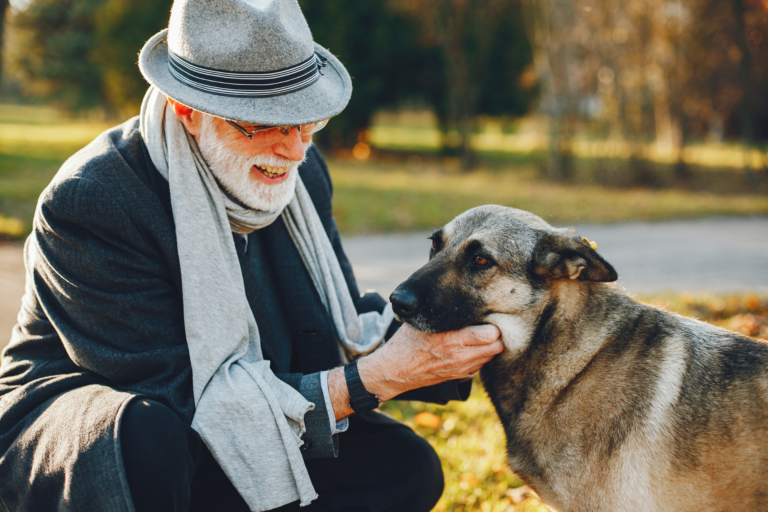
Ensuring your pet stays active and healthy throughout their life is key to their wellbeing. Dogs have different needs at each stage of life, from energetic puppies to senior companions. Understanding these stages and adjusting their care accordingly will help them lead a happy and healthy life.
In this blog, we explore the specific needs of dogs at each life stage and provide practical tips to ensure your furry friend thrives every step of the way.
Dogs go through several life stages, each with unique health and activity requirements:
Regular veterinary check-ups are essential for maintaining your dog’s health. Here’s what to expect:
St Kitts offers a Pet Health Care Plan that helps you spread the cost of essential treatments across the year. The plan includes vaccinations, parasite protection, health checks, and more – tailored to your dog’s age and needs. It’s a great way to stay on top of routine care and catch potential issues early.
Puppy stage
Engage in short play sessions using age-appropriate toys to keep your puppy active and entertained. Start basic training and socialisation early to foster mental stimulation and help them adapt to new experiences. Also, ensure they receive a balanced diet to support their growth and overall development.
Adolescent stage
Gradually increase the duration of exercise, incorporating structured walks and interactive games to keep your dog physically active. Continue with training and introduce new commands to maintain their mental engagement and development. Additionally, monitor their diet and weight closely as their metabolism changes to ensure they remain healthy.
Adult stage
Maintain a consistent daily exercise routine that incorporates walks, playtime, and enrichment activities to keep your dog active and engaged. If necessary, provide joint-supporting nutrition to promote mobility and overall joint health. Also, schedule regular veterinary check-ups to identify and address any potential health concerns early.
Senior stage
Adapt exercise routines to focus on low-impact activities, such as gentle walks and swimming, to accommodate your dog’s aging needs. Ensure they have a comfortable resting space to support their joints and provide relief. Adjust their diet to help maintain a healthy weight and promote optimal organ function.
Additionally, increase the frequency of veterinary visits to keep a close eye on any age-related health conditions.
Every stage of your dog’s life requires a tailored approach to health and activity. By understanding their changing needs and providing the right care, nutrition, and exercise, you can ensure they enjoy a long, fulfilling life. Regular vet visits and an active lifestyle are the foundation of a happy, healthy pet.
For expert veterinary advice and services, contact your nearest St Kitts practice today:
St Kitts Vets Hartley Wintney: 01252 844044
St Kitts Vets Basingstoke: 01256 844944
Crookham Park Veterinary Centre: 01252 913990
Firgrove Veterinary Centre: 01252 877799

As pet owners, we want the best for our furry companions. A key part of their health and happiness lies in the food they eat. But do you really know what’s in your pet’s food? Let’s explore the ingredients that go into popular pet foods and what they mean for dogs, cats, and rabbits.
Understanding pet food labels can be tricky, but it’s essential to know what you’re feeding your pet. Look for clear descriptions of ingredients. For example:
Dogs are omnivores, meaning they thrive on a mix of proteins, carbohydrates, and fats. High-quality dog foods should list meat as the first ingredient. Key nutrients to look for include:
Excessive fillers such as wheat gluten and artificial preservatives like BHA or BHT should be avoided.
Unlike dogs, cats are obligate carnivores, meaning they require a meat-based diet. Essential nutrients include:
Foods high in carbohydrates and ingredients labelled generically as ‘meat meal’ or ‘meat by-products’ without specifying the source should be avoided.
Rabbits have a unique digestive system that requires a high-fibre diet. Their primary food sources should be:
Foods with added sugars or seeds and low-fibre pellets that lack nutritional value should be avoided.
Whether you have a dog, cat, or rabbit, avoid pet foods that contain:
Your pet’s nutrition is the foundation of their wellbeing. By understanding what’s in your pet’s food and making informed choices, you can ensure they lead a happy and healthy life. Whether it’s a balanced diet for your dog, nutrient-rich food for your cat, or high-fibre options for your rabbit, the key is in the details.
At St Kitts Vets, we’re here to help you make the best decisions for your pet’s health. If you have any concerns or need advice, don’t hesitate to get in touch with our team.
St Kitts Vets Hartley Wintney: 01252 844044
St Kitts Vets Basingstoke: 01256 844944
Crookham Park Veterinary Centre: 01252 913990
Firgrove Veterinary Centre: 01252 877799

Kennel cough, or canine infectious respiratory disease (CIRD), is a highly contagious respiratory condition in dogs. Despite the name, it’s not just a problem for dogs in kennels – it can affect any dog, anywhere. Here’s what you need to know about kennel cough, from spotting the symptoms to keeping your furry friend safe.
Kennel cough is an umbrella term for various infections caused by viruses and bacteria, with Bordetella bronchiseptica being the most common culprit.
These pathogens inflame the trachea (commonly known as the windpipe) and bronchi (the bronchi are the two main branches that the trachea divides into, each leading to one lung), causing that well-known cough. While it’s rarely life-threatening, kennel cough can make your dog quite uncomfortable and might lead to complications if not treated.
Kennel cough spreads through:
The main indicator of kennel cough is a persistent, hacking cough that may sound like something is stuck in your dog’s throat. Other symptoms can include:
In severe cases, especially in puppies, elderly dogs, or those with compromised immune systems, kennel cough can lead to pneumonia.
Although very mild cases, in fit and otherwise healthy dogs, may resolve on its own within 1-3 weeks, treatment can often help to alleviate symptoms. Treatment should however be considered for young and elderly dogs and those with underlying conditions to prevent complications. Treatment options include:
If your dog’s symptoms worsen or they have trouble breathing, speak with St. Kitts immediately.
Vaccinating your dog is the best way to protect them. The kennel cough vaccine, often bundled with other essential vaccines, comes in three forms: injectable, intranasal, and oral. While it doesn’t guarantee complete immunity, it significantly reduces the severity and likelihood of infection.
At St Kitts, we offer a Pet Healthcare Plan that includes free kennel cough vaccines, among other benefits including parasite protection, nail clips, health checks and more.
Other prevention tips include:
If your dog shows signs of kennel cough or has been exposed to an infected dog, contact your local St Kitts practice:
St Kitts Vets Hartley Wintney: 01252 844044
St Kitts Vets Basingstoke: 01256 844944
Crookham Park Veterinary Centre: 01252 913990
Firgrove Veterinary Centre: 01252 877799
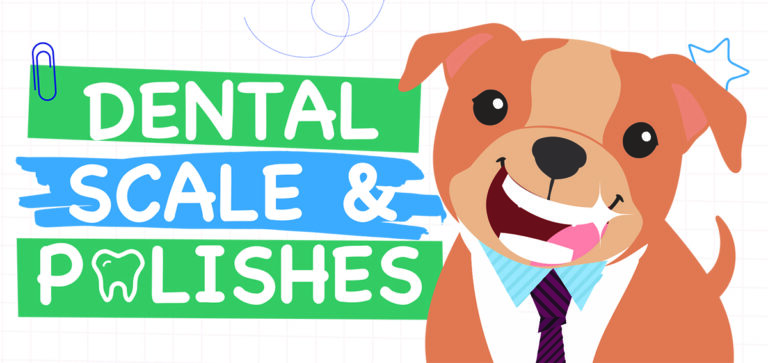
With Pet Dental Health Month just around the corner, it’s the perfect time to focus on giving your pet a pawsitively perfect smile!
This February, St Kitts Vets is excited to offer an exclusive Dental Scale & Polish service at our Hartley Wintney branch, all at a special discounted price of just £250.
Just like humans, pets are susceptible to dental problems such as plaque buildup, tartar, and gum disease. If left untreated, these issues can lead to more severe health concerns, including infections, tooth loss, and even systemic illnesses. Our Dental Scale & Polish not only cleans your pet’s teeth but also helps prevent these problems from developing in the first place. Regular dental care is essential for maintaining your pet’s overall health and wellbeing.
Our comprehensive dental service is designed to give your pet a healthy mouth and a bright, clean smile. Here’s what you can expect:
To make sure your pet is a good candidate for our Dental Scale & Polish, we’re offering a FREE Pre-Scale & Polish Dental Check with one of our experienced veterinary nurses. This preliminary check will allow us to assess your pet’s dental health and discuss any specific concerns you may have.
Don’t miss out – this exclusive discount is only available at our Hartley Wintney branch throughout February.
To schedule your free pre-check and take advantage of this limited-time offer, call us on 01252 844044 or visit our Hartley Wintney branch today.
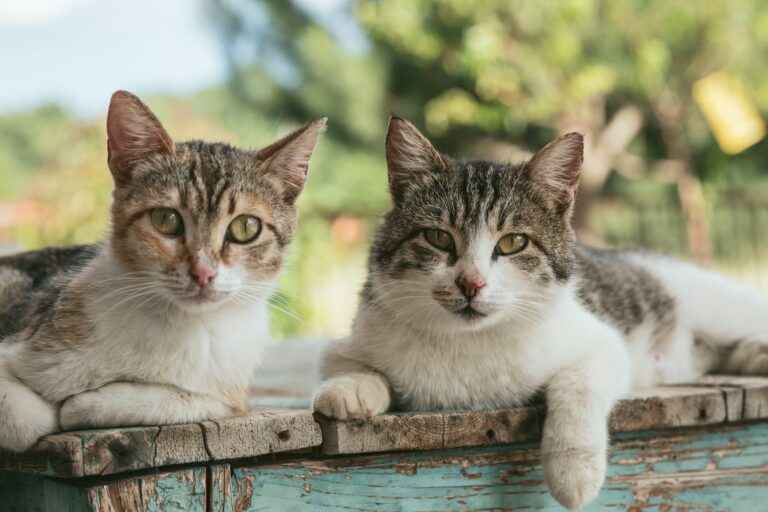
Are you considering welcoming a furry feline friend into your home? Understanding the characteristics of the most common cat breeds can help you make an informed decision about which breed might be the best fit for you and your lifestyle.
Here’s a look at some of the most beloved cat breeds in the UK, known for their unique traits and endearing personalities.
The quintessentially British breed, the British Shorthair, has a distinctive stocky body, dense coat and charming, round face. This breed is known for being affectionate, making it a perfect family pet. They are notably calm and easygoing, which complements a variety of household environments.
The Siamese cat, with its striking blue almond-shaped eyes and elegant, muscular body, is a marvel of feline beauty and grace. This breed is known for its intelligence, playful nature and often engages in lengthy conversations with their owners. Siamese cats thrive on social interactions and form strong bonds with their families.
Ragdolls are known for their mesmerising blue eyes and beautiful semi-long hair, they are gentle and often seek physical affection, making them ‘lap cats’. Ragdolls are ideal for homes that can provide them with plenty of love and cuddles.
The Bengal cat has a stunning wild appearance with a coat that resembles leopards and ocelots. This breed is vibrant and athletic, requiring regular exercise and mental stimulation. Bengals are particularly interactive and enjoy games that challenge their agility and intelligence.
As one of the largest domesticated cat breeds, Maine Coons are distinguished by their tufted ears, bushy tails and luxurious coats. They are known as gentle giants and possess a friendly and sociable nature. Maine Coons are excellent companions for children and get along well with other pets.
The Scottish Fold is easily recognised by its unique folded ears, giving it a cute owl-like appearance. These cats are incredibly affectionate and calm, preferring quiet environments where they can spend time with their human companions. Their gentle and easygoing nature makes them suitable for families and single-person households alike.
The almost-hairless Sphynx cat stands out due to its exposed skin and pronounced wrinkles. While this doesn’t make them hypoallergenic, they are known to produce fewer allergens than many fluffy cat breeds. Sphynxes are known for their loyalty and playful attitudes, and love to seek warmth and affection from their owners.
The domestic cat which is commonly known as a ‘Moggie’ is the most common cat living in UK homes. However, this cat is of no particular breed and has instead descended from the African Wildcat. Because of their random breeding, they do not have a definite appearance or temperament, so can come in all sizes, coat lengths and colours – from black and white to tabby or tortoiseshell.
When selecting a cat breed, don’t just consider the cat’s physical characteristics and personality traits but also your living situation, the cat’s activity level, and the amount of time you can dedicate to caring for and interacting with your pet. Each cat breed has unique needs and qualities, and finding a compatible companion is essential.
For further advice and quality pet care, contact your local St Kitts practice:
St Kitts Vets Hartley Wintney: 01252 844044
St Kitts Vets Basingstoke: 01256 844944
Crookham Park Veterinary Centre: 01252 913990
Firgrove Veterinary Centre: 01252 877799
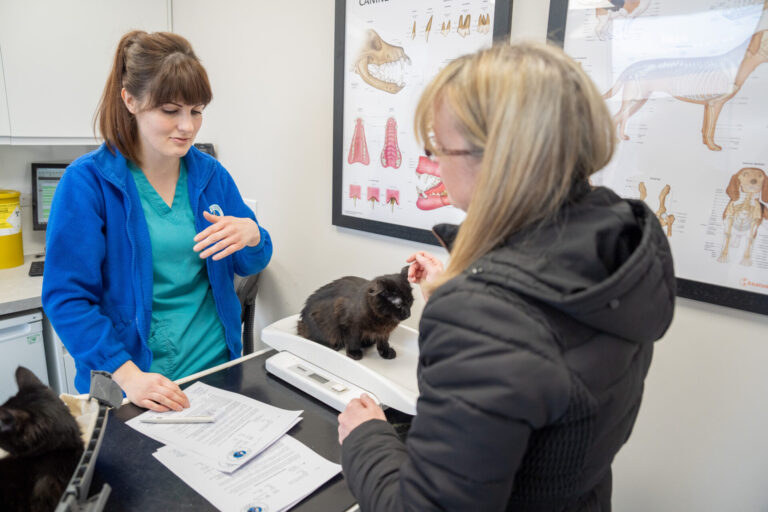
Regular vet check-ups are crucial for several reasons, all of which contribute to your pet living a long, healthy and happy life. During these routine appointments, your vet will be on the lookout for symptoms of illness, internal health issues and other conditions that may need addressing.
Here, our team at St Kitts Vets explain what makes regular check-ups so important.
Unlike us, pets can’t communicate when they are feeling unwell or experiencing discomfort. During a routine check-up, our vets will perform a thorough examination to identify any potential health problems early on. Early detection allows for timely intervention and treatment, which can significantly improve the outcome and may even save your pet’s life.
Prevention is always better than cure. Regular vet check-ups help ensure that your pet is up-to-date on vaccinations, parasite prevention, and other essential preventive measures. This significantly reduces the risk of your pet contracting avoidable diseases and infections.
Every pet is unique, and their healthcare needs may vary based on factors such as breed, age, lifestyle, and pre-existing conditions. During check-ups, our vets can provide tailored health recommendations, including dietary advice, exercise plans, and behavior tips, to help your pet live a healthier and happier life.
Dental problems are common in pets and can lead to serious health issues if left untreated. Regular vet check-ups will mean your pet’s teeth, mouth and gums can be given a quick once over to help maintain good oral health.
As pets age, they become more susceptible to certain health conditions, just like humans. Regular check-ups for senior pets allow us to monitor their health closely, catch age-related issues early, and provide appropriate senior pet care to improve their quality of life.
Pet obesity is a significant concern, as it can lead to various health problems. During vet check-ups, your pet’s weight can be monitored, and our vets and nurses can offer guidance on proper nutrition and weight management if needed.
No one likes visiting the doctor or the dentist, pets included! However, regular visits are a great way to help your pet become familiar and comfortable with the clinic environment and our team. This will help to reduce stress and anxiety during subsequent visits.
Many countries have specific requirements for vaccinations and animal health certificates when traveling or moving with pets. Regular vet check-ups ensure your pet’s vaccinations and paperwork are up-to-date, making travel and relocation hassle-free.
As a member, you get two FREE health checks per year – one with a vet during your pet’s booster appointment, as well as one with a nurse 6 months later.
Other excellent benefits include:
And more!
*Tick control included with Plus Plans only.
**One nail trim included with Standard Plans.
You can find out more about our Pet Healthcare Plans here.
You can book a check-up with our team online, or by getting in touch with your local practice:
St Kitts Vets Hartley Wintney: 01252 844044
St Kitts Vets Basingstoke: 01256 844944
Crookham Park Veterinary Centre: 01252 913990
Firgrove Veterinary Centre: 01252 877799
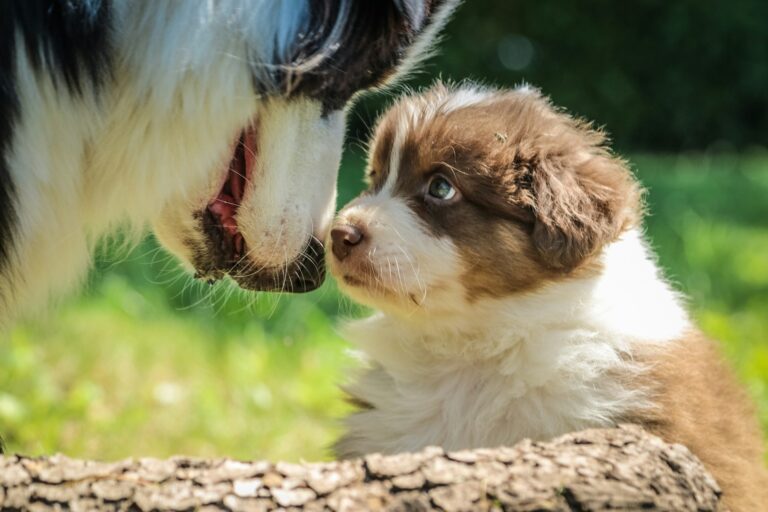
One of the most exciting things about bringing a new puppy home is introducing them to new people, animals, environments and experiences. This early exposure plays a crucial role in shaping a confident and sociable adult dog, and is known as puppy socialisation.
Puppies, like humans, go through a critical developmental phase when they are particularly receptive to new experiences. This period, typically from 4 to 12 weeks of age, is when puppies learn to navigate the world around them.
Proper socialisation during this window helps puppies become more confident and less fearful as they grow up. A well-socialised puppy is more likely to view new experiences, people and animals as fun and exciting, not frightening.
Many behavioural issues in adult dogs, such as aggression, anxiety and fear, can stem from inadequate socialisation during puppyhood.
By exposing puppies to a wide variety of stimuli in a positive and controlled manner, they learn to cope with new situations without resorting to negative behaviours.
Socialised dogs are typically less reactive and more adaptable, which means they’re less likely to develop issues like excessive barking, chewing, or aggression.
Socialisation experiences, especially positive ones, contribute to strengthening the bond between the puppy and its owner. It builds trust and confidence in the puppy’s ability to navigate new situations with the support of its human companion.
Socialised puppies are easier to manage and less likely to get into dangerous situations.
For example, a dog that’s comfortable around people is less likely to bite out of fear or anxiety. Similarly, a dog that’s accustomed to various sounds and sights is less likely to bolt or become uncontrollably frightened in noisy or busy environments. This not only keeps the dog safer but also protects people and other animals around them.
Socialisation lays the foundation for successful training. Puppies that have been well-socialised are typically more receptive to obedience training and can learn new commands more quickly and effectively.
Routine care, such as veterinary check-ups and grooming, can be stressful for dogs. However, if a puppy has been gently exposed to handling by different people and to various environments, they’re more likely to be calm and cooperative during these visits. This not only makes the process smoother but also helps ensure that your dog receives the best possible care without undue stress.
Socialised dogs are typically more pleasant companions in social settings, whether it’s meeting other dogs on walks, welcoming visitors to your home, or accompanying you on outings. They’re better equipped to read and respond to social cues from both humans and other animals, leading to more positive interactions and reducing the likelihood of misunderstandings or conflicts.
Begin socialisation as soon as you bring your puppy home, keeping in mind the balance between exposure and the puppy’s vaccination schedule.
Expose your puppy to different people, environments, sounds and animals, ensuring that these experiences are positive and not overwhelming.
Start with less intense experiences and gradually increase the level of stimulation as your puppy becomes more comfortable.
Use treats, praise and play to create positive associations with new experiences and people.
Socialisation is a process. Regular, gentle exposure to a variety of experiences is key to building a well-rounded adult dog.
If you would like more specific advice about socialising your puppy, contact your local St Kitts practice:
St Kitts Vets Hartley Wintney: 01252 844044
St Kitts Vets Basingstoke: 01256 844944
Crookham Park Veterinary Centre: 01252 913990
Firgrove Veterinary Centre: 01252 877799

As we head into spring, it’s a crucial time to be aware of ticks, which are most commonly found between the spring and autumn months. These common parasites can pose threats to your pets and family if left untreated.
In this article, we’re sharing how you can identify and safely remove ticks from dogs and cats (as well your other pets!) to help protect them from infections like Lyme disease.
Ticks are small, spider-like parasites that have eight legs and an egg shaped body. They are typically found in long grass and woodland areas.
Unlike fleas, they don’t jump, but will latch onto your pet’s fur if they brush past. They can feed on their blood for a few days before dropping off once they’ve had enough. However, during this time, there’s a risk the tick could transmit a disease to your pet.
It’s important to check your pet’s fur regularly for ticks, paying close attention to areas like their ears, neck and paws.
You may notice ticks become darker in colour, as they feed on your pet’s blood.
When removing a tick, make sure you don’t squeeze the tick’s body or leave the head in, as this can push blood back into your pet and increase the chance of infection or disease transmission.
If you see a black spot, redness or swelling where the tick was located, it is likely the tick was only partially removed. In these cases, there is a higher risk of infection, so it’s best to book an appointment with your vet to get your pet checked over.
To avoid causing the tick to split, you’ll need to twist it off. This can be done easily using a tick removal tool, widely available at vets and pet shops.
Some people try to burn ticks off, or use lotion to suffocate them; we strongly advise against this. These methods can harm your pets and will not prevent disease.
Lyme disease is a severe bacterial infection carried by ticks. Dogs, cats and humans can all get Lyme disease, although it’s rare in cats.
Symptoms to look out for include (but may not be limited to):
Lyme disease can be treated with antibiotics, if detected early. If you are concerned that your pet may have Lyme disease or is showing any of the listed symptoms, contact your vet immediately for tests and prompt treatment.
It’s possible to protect your pet from ticks. With different types of preventative tick treatments, such as spot-on treatments and tablets available, that kill or repel ticks if they attach themselves.
Tick treatment is included with our Pet Healthcare Plus Plans, with products delivered straight to your door. Our Plus Plans also cover:
To find out more about our Pet Healthcare Plans, click here.
If you are worried about removing the tick yourself, or have concerns about your pet’s health, contact your local St Kitts practice immediately:
St Kitts Vets Hartley Wintney: 01252 844044
St Kitts Vets Basingstoke: 01256 844944
Crookham Park Veterinary Centre: 01252 913990
Firgrove Veterinary Centre: 01252 877799

Easter is a time of joy, celebration, warmer weather and, of course, lots of chocolate! But it also brings potential hazards for our furry friends. Pets, curious and eager to explore, may find themselves in risky situations, whether it be around certain foods or even out in the beauty of nature. In this article, we’re highlighting some of the common Easter dangers for pets and tips on how to keep them safe.
Generally, at this time of year, there’s no shortage of sweet treats in our homes, though this does mean there are more opportunities for our pets to get their paws on whatever they may find lying around.
Surveys by the British Veterinary Association (BVA) have found that around three in five vets treated pets for chocolate poisoning during the Easter holidays. These stats have changed very little over the years, indicating that more needs to be done to highlight the danger chocolate poses to pets.
Chocolate and sweets are toxic to both dogs and cats, containing substances like theobromine, xylitol and caffeine that can cause side effects like vomiting, diarrhoea, rapid breathing and increased heart rate, among others. Symptoms can take anywhere between 4-24 hours to show, so it’s really important to get in touch with your vet immediately if your pet has eaten anything they shouldn’t have.
Dogs are typically the ones who are most tempted, as cats and rabbits can’t taste the sweetness, but it’s best to keep any Easter eggs and other human treats far out of reach in fridges, cupboards or drawers.
While spring is a time where our gardens and homes brighten up with beautiful blooms, it can also pose a serious problem in cases where some plants are toxic to our pets.
For an extended list of plants that are harmful to pets, please read our other articles:
They’re an Easter favourite for us humans, but come with a word of warning: don’t share these with your pets! Raisins and sultanas, along with many other dried fruits, are known causes of kidney failure in both cats and dogs, even it’s just a small quantity.
If you arrange an Easter egg hunt in your garden, just make sure that all have been found before you let your dog outside, as they’ll easily find any that have been left behind. Even if you’ve used plastic or hard boiled eggs instead of chocolate ones, these can still be harmful, causing blockages or other digestive issues.
The hustle and bustle of Easter celebrations can be overwhelming for pets – particularly if travel is involved. Many pets don’t respond well to changes in routine, which can cause stress. Look out for changes in their behaviour, including becoming withdrawn or more reactive, panting and shaking, or needing the toilet more than usual.
We hope you and your pets have a safe and wonderful Easter!
If you suspect your pet may have eaten something they shouldn’t have, please get in touch with your local St Kitts practice:
St Kitts Vets Hartley Wintney: 01252 844044
St Kitts Vets Basingstoke: 01256 844944
Crookham Park Veterinary Centre: 01252 913990
Firgrove Veterinary Centre: 01252 877799
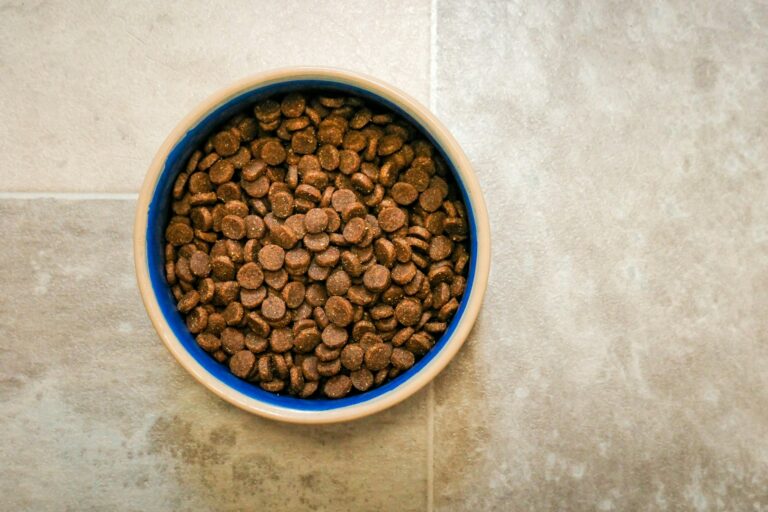
It may surprise you to hear that 65% of dogs and 39% of cats in the UK are either overweight or obese – something that is definitely a growing concern.
In fact, a recent study found the average dog is being overfed by 54,000 calories a year – that’s the equivalent of a human consuming 402 burgers!
To help you keep your pet a healthy weight, we consulted with the team at St Kitts to put together their top tips. It’s important to note that your pet’s specific breed characteristics will need to be considered individually, as all will have varying body types.
A subtle change to your pet’s physical appearance can be a sign your pet is becoming overweight. To check, see if you can easily feel your pet’s ribs without pressing too hard. If you can’t feel them, this may mean your pet is overweight.
Look at your pet – if there is no distinct waist or if it appears to be bulging, your pet may be carrying excess weight. Having a noticeable waist, between the ribs and hips, is a healthy sign.
A slight tuck in the abdomen is normal for many pets. If there is no discernible tuck or if the belly hangs down, it could indicate excess weight.
If your pet seems to be lacking in energy and unwilling to play or explore, it could be a sign that excess weight is causing them discomfort when actively moving about.
If your pet is having difficulty moving around, jumping or exercising, it might be due to excess weight. Observe their activity level and consult your vet if there are any concerns.
Feed your pet a well-balanced and nutritional diet, suitable for their age, size and breed. You can always ask your vet for advice on the appropriate type and amount of food for your pet.
Keep track of your pet’s weight over time. Sudden or consistent weight gain could be a sign of an issue. Regular visits to your vet for weight checks can help monitor this.
Be observant – keep an eye on what your pet is eating, as it might be more than you think! If you make any changes to their diet, check their weight and monitor their progress.
Be mindful that leftovers aren’t really meant for pets, especially ones with a high fat content; It can be easy to pile on the pounds when regularly feeding them bits and pieces. Eating inappropriate food can also lead to the development of other conditions, such as pancreatitis.
A new lower calorie diet could be key to helping your pet lose weight. Be sure to check with your vet before introducing a new diet to make sure it’s appropriate.
Treats are great as a reward, but they should be just that, a treat, not part of your pet’s regular diet. Take care to only offer treats intended for pets and opt for healthier alternatives to keep the calories under check.
Regular exercise is an important part of staying fit and healthy. It’s reported that 44% of dog walks are less than 30 minutes, with 13% of dogs not being walked every day.
If you’ve noticed your dog is gaining weight, simply extend their walk by ten minutes, or take them out for another short walk during the day to help them burn fat. Interactive toys are another great way for your pet to burn calories.
Instead of leaving food out all day, establish a feeding schedule. This allows you to control the portions and monitor your pet’s eating habits.
Measure your pets food to avoid overfeeding. Follow the feeding guidelines provided by the pet food manufacturer, and adjust as necessary based on your pet’s activity level and age.
Consistency is key to maintaining a healthy weight for your pet. Stick to their feeding and exercise routine to avoid your pet becoming overweight and don’t be afraid to raise any concerns with your vet.
At St Kitts, we offer Weight Clinics run by our expert Veterinary Nurses for pets who are overweight, providing plans to suit the individual needs of the pet.
Our team will organise regular weigh-in appointments and can provide owners with expert advice on diet and exercise.
If you have concerns about your pet’s weight, contact your local St Kitts practice immediately:
St Kitts Vets Hartley Wintney: 01252 844044
St Kitts Vets Basingstoke: 01256 844944
Crookham Park Veterinary Centre: 01252 913990
Firgrove Veterinary Centre: 01252 877799